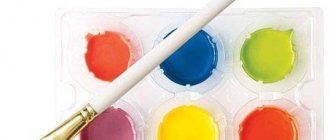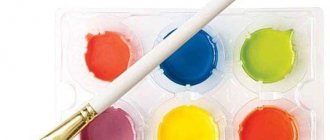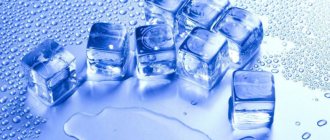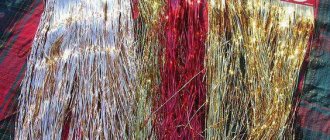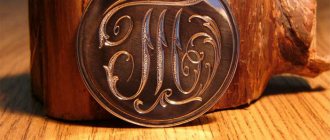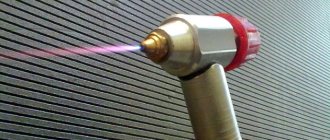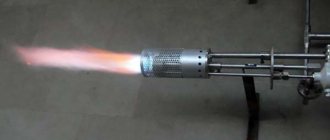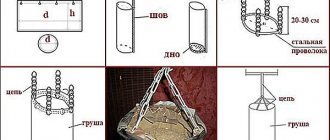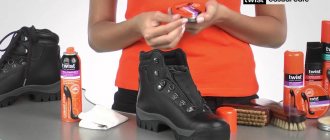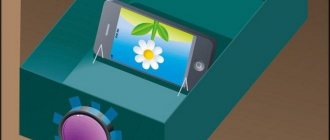Ebru (water painting) is becoming popular every day. With the help of this art, people get to know themselves and the world, become less hot-tempered and find themselves. Even if you don’t know how to draw, thanks to water you can create unique magical patterns, opening your feelings to everyone.
Ebru is a very ancient art that came to us from Turkey, where it is called “Turkish marbling.” The technique of drawing on water looks exactly like this: first, a beautiful pattern is drawn on the water, which is famous for its thin, refined lines, and then it is transferred to paper or silk fabric, for example.
The history of Ebru
The method of creating paintings on water canvas appeared a long time ago, in the countries of the East. So in the 12th century in Japan they loved this type of creativity. Back then, images were created on thin rice paper, and the art was called “floating ink” because of the technology used.
Although historians have not been able to determine exactly where art originated. The technique is often referred to as Turkish creativity. In this country, masters can not only create abstract patterns on water, but also paint landscapes, birds and fish.
The name Ebru is translated from Persian as “air clouds”; it is precisely similar patterns that are often obtained when drawing.
The method of creating paintings on water canvas appeared a long time ago, in the countries of the East.
What is so attractive about Ebru?
Ebru are unreal paintings. Do you remember how ordinary puddles with colored gasoline stains were sometimes enchanted? Ebru from this series. The drawing appears as if by itself. It may not meet the artist's expectations, but it certainly won't disappoint.
For a child with a developed imagination, a set of ebru will be the best gift - it will help him create new amazing “worlds”.
Also using watercolor painting:
- calm the nervous system;
- develop creatively;
- take a break from everyday routine
But these are already points for parents.
What is the Ebru technique?
According to this art technology, to create a painting, Ebru paint is initially applied to water, after which the resulting pattern is transferred to a paper base.
It is necessary to apply coloring agents that do not react to exposure to water in a certain order. The layer adheres to the surface of the water surface, and a film covering of flowers is obtained. Using special devices for this creativity, the artist creates unusual weaves from shades, resulting in a painting.
When the image is ready, it is carefully transferred to a prepared base, which can be paper, fabric, or a piece of wood.
Today, the technique is becoming in demand, and there are even clubs teaching this technology. But you can learn to draw in the Ebru style at home; for this purpose you do not need to purchase a lot of equipment and materials. You can find them in a craft store.
This way you can combine your own learning with activities with your child, the process will be interesting for both parents and children, this is an opportunity to spend useful and exciting time together.
According to this art technology, to create a painting, Ebru paint is initially applied to water, after which the resulting pattern is transferred to a paper base.
Master class - unconventional drawing technique "Ebru"
Anna Kostyleva
Master class - unconventional drawing technique "Ebru"
Today I want to introduce you to the unconventional drawing technique “EBRU” and conduct a master class.
Even in the ancient Greek scientist and philosopher Aristotle said: “Drawing contributes to the diversified development of the child,” and the Czech humanist teacher J. A. Komensky argued: “Children always willingly do something. This is very useful, and therefore not only should not interfere with this, but measures must be taken to ensure that they always have something to do." Modern researcher of children's visual arts
T. S. Komarova’s creativity states that artistic activity brings joy to children’s lives, since the child comes into contact with rich, bright colors, patterns, and images.”
Scientists who have studied children's visual creativity have pointed out that the development of an individual's creative potential should be carried out from early childhood, in order for the results to be positive, it is necessary to interest the child. Scientists such as E. A. Flerina, N. P. Sakulina, T. S. Komarova, G. G. Grigorieva spoke about this.
All children love to draw. Very often, due to a lack of knowledge and technical skills in visual arts, a child loses interest in creativity.
From experience working with children and developing artistic and creative abilities in drawing, we can say that standard sets of visual materials and techniques are not enough for modern children, since the level of mental development and potential of the new generation has become much higher.
In the course of observations of the visual activities of children in kindergarten, we can conclude that the decrease in interest and motivation for creativity has several reasons:
1. Children lack the necessary knowledge, skills and technical skills in drawing;
2. Templates and monotony in the image and design of the drawing;
3. Insufficient knowledge about the world around us.
Unconventional drawing techniques give impetus to the development of children's intelligence, imagination, fantasy, and the ability to think outside the box.
They allow you not to impose certain cliches and stereotypes on your child in drawing. Children reveal their abilities, their uniqueness in fine art activities and receive satisfaction from work. They begin to feel the benefits of creativity and believe that mistakes are just steps towards achieving a goal, and not an obstacle.
Unusual materials and original techniques attract children because the word “no” is not present here; you can draw with whatever you want and how you want, and you can even come up with your own unusual technique. Children feel unforgettable, positive emotions.
Each of the unconventional techniques is a small game. Their use allows children to feel freer, bolder, more spontaneous.
The choice of non-traditional drawing techniques as one of the means of developing children's visual creativity is not accidental.
Most non-traditional techniques relate to spontaneous drawing, when the image is obtained not as a result of the use of special artistic techniques and mastery of drawing techniques, but as a “happening” effect (translated from English as “happening”). Moreover, it is not known what kind of image will be obtained, but the result will be successful and this increases the interest of preschoolers in visual activities and stimulates their imagination.
In my work I use a variety of non-traditional techniques (drawing, monotype, fingerprinting, thread printing, blowing, salt painting, etc., which create an atmosphere of ease, openness, relaxedness, develop initiative, and the emotionally positive effect of activity. Preschoolers create something new and original, embodying their idea.
I will dwell in more detail on one of the unconventional drawing techniques “EBRU”.
“EBRU” is the art of painting on water. Since ancient times, water has attracted the interest of man and attracted him with its extraordinary qualities.
Drawing on water is so ancient that no one knows exactly when it originated, but we can say for sure that this technique originated in Asia (Turkestan, India, Turkey, and then gradually appeared in Europe.
Translated, the word “Ebru” means “cloudy”, “wavy”. In Europe, Ebru drawings were called “Turkish paper” or “marble paper”.
Now this art has many fans, entire
schools for teaching the Ebru drawing technique.
For painting you need viscous water, paints that do not dissolve in water, flat brushes, sticks, combs, paper (it should be for painting with watercolors or thick, rough; plain paper is not suitable, because it quickly absorbs liquid.
The essence of this technique comes down to the fact that liquids have different densities and insoluble paints do not sink, they are held on water and create a thin film.
When working with preschoolers I use the EBRU technique to:
develop artistic creativity, imagination, fantasy, interest in visual arts.
It helps solve the following problems:
1. Continue to introduce preschoolers to non-traditional drawing techniques;
2. Select and use non-traditional fine art materials;
3. Develop a desire to experiment in drawing, showing vivid feelings and emotions: joy, surprise;
4. Nurture creative self-realization and individuality.
And as a result:
1. Children independently use non-traditional techniques;
2. Find non-standard methods of artistic representation;
3. They know how to convey their feelings and emotions, and enjoy their work.
The Ebru technique at home is no different from the professional one. The availability of materials allows almost anyone to take up art.
And today I will conduct a master class “Unconventional drawing technique “EBRU”.
First, I'll tell you how to work with this technique.
step 1.
Drawing Ebru begins with Preparing the liquid.
Prepare a thin paste of starch and water and let it cool, then add a little office glue to it and mix everything. If bubbles appear on the surface, place regular newspaper on it for 15 - 30 seconds and remove. The liquid is ready for use. As you can see, the liquid has already been prepared.
Step 2.
Preparing paints
To paint, take acrylic paints and dilute them with water until liquid. Before painting, mix the desired paint each time, as it settles.
Step 3.
Preparation of ISO material
We will need: trays for liquids, brushes, sticks, paints, dry and wet napkins, paper (watercolor, palettes.
Step 4
Drawing in this technique
We take a tray with the prepared liquid and a stick, put paint on the tip of the stick, and lightly touch the surface of the water (we can put several dots depending on what is planned) or use a brush to make a background (we put paint on the tip and shake it quietly onto the water, tapping the brush on the left finger hands at a height of 5-6 cm from the surface).
Next, we implement our plans (flowers, landscape, background or something else)
Step 5
Transferring a drawing to paper
Take a sheet of paper that matches the size of the tray, carefully place it on the surface and wait a few minutes until the edges begin to rise. We take the edges of the paper and lift it.
Let the drawing dry overnight. If you did the background, then you can continue working, and if you did the drawing, then it is ready. And now I suggest you try drawing using this technique.
As you already understand, during the work process, it is very difficult to predict how the paints will spread. Therefore, there are no specific frameworks or restrictions here, but only personal flights of fancy and ideas are limitless. And each drawing will be, in its own way, one and only.
Conclusion
With your permission, I will summarize. As a teacher, the use of non-traditional drawing techniques, in this case the EBRU technique, helps me develop cognitive activity and correct the mental processes of preschoolers.
Children's drawings have become more interesting, more meaningful, and their ideas have become richer.
Working with children, I came to the conclusion: a child needs the result that causes him joy, amazement, surprise.
Thus, the knowledge that preschoolers acquire is formed into a system; We do not stop at the achieved results and in the future we set the task of improving the acquired skills and abilities, freely moving on to mastering more and more unconventional techniques in drawing, using unusual materials for our works, and maybe even creating our own individual “I” in creativity.
I carry out my work not only with children, but also conduct master classes with parents, introducing them to non-traditional techniques. We design stands and exhibitions, and I run a class on fine arts activities myself.
Thank you for your attention!
Features of unusual art
You should purchase not only paints for painting on water, but also prepare a water base. Ordinary water will not be able to retain the coating; hevea extract is added to it; the substance helps increase density, the liquid will become thicker, and drops of the coloring agent will not sink to the bottom before the required time.
The composition of the paints is unusual; it contains minerals and ox bile. Using an awl or other suitable tools, colors are mixed to form an abstract image that fascinates and attracts attention.
Ordinary water will not be able to hold the coating; hevea extract is added to it; the substance helps increase density.
Ebru technology
The technology of classic ebru was kept a closely guarded secret until recently. Masters passed on knowledge only to their students from generation to generation. But now the situation has changed, and everyone can learn the technique of drawing ebru.
- The very first stage of ebru is preparing the water surface on which the artist will create drawings. First, filter the ebru solution using a nylon stocking. Pour the solution into a rectangular container. Then cover with paper for 5 minutes so that all air bubbles disappear. (this must be done after each drawing).
- The second stage is creating a drawing. We stir the paints, take a brush, dip it into the paint and literally shake it off the brush onto the surface of the water. Drops of paint falling on water do not sink or dissolve in it. They change their shape, spreading across the surface. Then we begin to move the awl through the water, turning drops of paint into strange patterns or flowers. At the same time, water is our assistant - it harmoniously complements the slight movement of the hand.
- The easiest way to create a pattern is to use a special comb. After the paint is splashed onto the water, a comb is drawn across its surface. The result is unusual color patterns.
- Another option is to combine the two methods. First, paint is sprayed, then a background is created using a comb - we drag it along the water surface. After this, we dip the tip of the awl into paint, drip it onto the background and form a pattern from one or several drops.
- The third stage is transferring the design from the surface of the water to paper. Very carefully place a sheet of paper on the drawing, wait 10 seconds, lift the edge with an awl and remove the paper, resting it on the side of the container. When the painting dries on a flat surface, it is ready.
Necessary materials and equipment for drawing on water
Conducting a lesson at home using the Ebru technique is not difficult for a child; the process is exciting, and even kids can cope with it. This kind of art helps the child’s development and helps develop fine motor skills. All you need to do is prepare a simple set for the creative process, which includes:
- Containers with small sides;
- Prepared water that has been thickened;
- Paints on Ebru water;
- Comb, awl, skewers, knitting needles;
- A paper, fabric or wooden base for transferring the design.
You need to prepare a simple set for the creative process.
Why are children interested in watercolor painting?
Ebru differs from drawing with conventional pencils, paints and felt-tip pens. And you know what? Magic.
The drawing process seems fabulous, enchanting. After all, you are drawing on water, which remains clean even after the paint gets in – only a drawing is created. In addition, even those who create for the first time can draw something beautiful.
Thickener for ebru. How to breed
To obtain the desired thickness of the water base, it is necessary to introduce a thickener for the liquid. In special departments you can find ready-made mixtures for this purpose. They are diluted in water, following the instructions from the manufacturer; there is nothing complicated about it.
If you can’t buy a thickener, you can thicken the water with starch; add it and mix it with the liquid until it has a paste-like consistency.
To obtain the desired thickness of the water base, it is necessary to introduce a thickener for the liquid.
Reviews
Tatyana, 23 years old
I accidentally saw a set of ebru, I didn’t even know what it was. I just wanted something unusual to distract myself from sad thoughts (there was just a period of stress - breaking up with my boyfriend, problems at work).
I bought it and started drawing – thoughtlessly, automatically. But as a result, I received surprisingly positive, life-affirming pictures. I hung them in frames in a visible place. Now I often look at them and feel reassured. I feel less depressed.
Ivan, 19 years old
I have been interested in the ebru technique for three years now. The pictures look cosmic. I got several of my classmates hooked on this art – they even organized an exhibition with them in the hall of the hostel. But not a simple one, but in the style: “Guess what is shown in the picture.” The success was amazing. Even the commandant took part. It seems that after the exhibition she also bought herself a set of ebrus. But it is not exactly.
And I'll buy it. It's my nephew's birthday soon. It would be a great gift.
Inga, 30 years old
My son is 6 years old. For a very long time he asked to buy him a set of ebru. I didn’t agree - I thought that the whole apartment would be covered in paint and he, like a true artist, would always be in an unwashed state. But no - the paints are easily washed off from your hands, the set’s configuration allows you to store the trays and paints very compactly. But the main thing is that the child is delighted. Feels like a great creator. And I feel a little guilty that I put off the purchase for so long.
After all, the pictures are truly fascinating.
Paints for Ebru
The main element in drawing is, of course, paint. So, what colors are needed for Ebru? The composition contains a natural type of color and ox bile to obtain the necessary properties. They are more liquid in appearance, which allows them to spread evenly over the prepared base on water. Shake them well before use.
It is more convenient to apply the products when they are pre-poured into bowls; brushes or awls can serve as tools for the artistic process.
You can replace store-bought paints, when there is no need to constantly paint, with homemade solutions. The recipe for preparing the composition will be described below.
The composition contains a natural type of color and ox bile to obtain the necessary properties.
How does Ebru affect a child?
Children are positively influenced by any type of art, and the unusual Ebru technique is no exception. This drawing technique performs the following functions:
- instills a craving for beauty;
- develops thinking, imagination, attention, perseverance, observation;
- improves fine motor skills of the hands;
- teaches you to plan your actions;
- improves children's color perception;
- Helps relieve tension and stress.
Worldwide art therapists and psychologists have been using ebru in their practices for a long time. They turn to water surfaces and colors to develop intuition, subconscious resources and self-regulation in their patients.
Children, just like adults, enjoy drawing on the water, creating unique creative units.
Water container
From the dishes you will need to prepare one for applying patterns. It should be the right size for the task at hand, and there should be sides to hold the liquid. You shouldn’t use tall ones; it’s easier to draw when they’re low.
It is also worth preparing a small container for paint, one for each shade.
It should be the right size for the task at hand, and there should be sides to hold the liquid.
Brushes for Ebru
Brushes are suitable with a hard base, horse or bristle hair is suitable. The quantity needs to be prepared according to the number of shades, then the colors will be applied without mixing, and the design will be more interesting.
The brush does not dip into the liquid; you just need to spray the color from the tool to then create patterns on the surface using the paint.
Brushes are suitable with a hard base, horse or bristle hair is suitable.
What you need to draw ebru on water
Traditional materials for creating ebru patterns are made in Turkey and consist only of natural ingredients.
- Aqueous solution for ebru
. A special thickener is added to the water - extract of the prickly plant Geven. Thanks to this, the paints do not fall to the bottom, but remain on the surface. - Paints
. Ebru dyes are made from natural pigment, water and cattle bile. They are very liquid in consistency. Bile also helps paints adhere to the surface and spread across it. - Brushes
. Ebru brushes are made from horsehair and rose stem. These materials have the ability to absorb paint and easily release it in the form of many small drops. - Shiloh
. An awl is used to create a design. The artist uses it to smoothly move paints across the water surface, thereby creating the necessary shapes. The awl can be replaced with knitting needles or bamboo skewers. - Comb
. The comb helps create a background for the design. It is advisable that its dimensions correspond to the size of the pallet. This will help create a uniform background. - Pallet
. There are no special requirements for the pallet. The main thing is that its dimensions are slightly larger than the paper on which the drawing will be printed. - Paper
. You can use any paper except glossy.
The cost of traditional materials for ebru is high; they can be purchased in Turkey, as well as via the Internet or in special stores in Moscow and St. Petersburg.
Combs
After spraying the dye, you need to give it direction; combs with metal spikes are suitable for this. They are made infrequently on the basis; it is with the spikes that the paint is drawn into the desired image using water.
After spraying the dye, you need to give it direction; combs with metal spikes are suitable for this.
Paper
To preserve the creative result, the painting is transferred to paper. You will need a fabric that is not too dense; according to the requirements, it must differ in the following parameters:
- The size must be suitable for the selected container;
- Absorb the coloring composition efficiently;
- It must withstand exposure to water so that it does not immediately become wet when exposed to it;
- Be in good shape and quickly restore it after drying;
- A suitable weight level is approximately 120gsm, which is thicker than printer paper.
Paper material is also sold specifically for this painting technique.
The fabric must be able to withstand exposure to water so that it does not immediately become wet when exposed to it.
The process of drawing on water
Having prepared the necessary materials, you need to understand how to draw in order to get a unique pattern and transfer it to a base made of fabric, paper or wood.
Having prepared the necessary materials, you need to understand how to draw in order to get a unique pattern.
Creating a background
Any picture requires a background; first the selected tone is sprayed onto the base, the first drops may sink, but after that the layer will be fixed. You can use up to three shades for the background; using more is not advisable. It is not worth making a thick layer; transferring it will be difficult.
Afterwards, you can apply other shades and draw with them using a comb or awl.
You can use up to three shades for the background; using more is not advisable.
Creating the main drawing
You need to draw patterns from large elements; complex details are drawn at the end. The first color is introduced in a small amount through an awl or a brush onto the surface, a round or oval spot will remain, another color is added on top, then they are stretched at the discretion of the master to obtain ornamental patterns.
Each time you dial a new shade, you need to clean the device for work.
You need to draw patterns from large elements; complex details are drawn at the end.
Transferring an image to paper
It is not difficult to transfer the design to the material; the paper web is applied to the image for a short period, then left to dry. The dried base can be leveled under a press if necessary.
It is not difficult to transfer the design to the material; the paper web is applied to the image for a short period, then left to dry.
Is it possible for children to draw Ebru at home?
After all, this unusual way allows you to keep your little fidget busy for quite a long time.
Despite the complex name and description, there is a more simplified version for home exercises. At home, a base such as milk, 2.5% fat, is perfect. Milk is poured into a bowl, a brush with paint is lowered into the milk. The paint flows down and forms a spot of the desired size around the brush (you can also drip paint from a regular pharmacy pipette). And so on several times.
Then take a stick (toothpick, sushi stick, match) and draw different lines, patterns, etc. You can stop at this stage, because the process itself is fascinating.
Note! But there is an interesting addition: the tip of a cotton swab is moistened with dishwashing liquid and dipped into the center of the plate/container, 2-3 mm deep.
The drawn image immediately begins to change. All that remains is to observe and be surprised!
Drawing on milk
How to make ebru paints with your own hands
It is possible to make paints for Ebru yourself, but you will also need a homemade base. This is how acrylic paints are used, which are made liquid, ordinary water is added to them, and glycerin or starch is used to thicken the water film.
For children's work, you can use gouache, also diluted with water. The base will be full-fat milk, with a couple of drops of dishwashing liquid added.
Acrylic paints or gouache are suitable, they are made liquid and ordinary water is added to them.
Ebru: master class for beginners
If you want to try painting on water at home, it's easy to do. Firstly, ready-made kits for ebru are sold (by the way, this is a good gift option, you can buy it here), and secondly, you can assemble such a kit yourself.
• a tray the size of an A4 paper sheet;
• ready-made thickener for the base or homemade.
• Ebru paints or oil paints and oil thinner for them;
• Brushes. It is better to use with hard bristles, as larger drops form on them.
• container for washing brushes; • napkins; • primed paper for transferring the design. You can use any matte paper, but it will lose its shape when it dries;
• Combs, awl. Instead of an awl, you can use a thin stick.
Any flat surface is suitable as a workplace. To avoid paint getting on it, you can cover it with film or paper.
Ebru - drawing at home for children
Drawing ebru can be used as art therapy for children with increased excitability and allows you to develop the child’s creative potential. Children aged 3-10 years old enjoy drawing on the water, seeing that the drawing, as if by magic, takes on the most bizarre shapes. Professional consumables can be replaced with more accessible and inexpensive ones.
1. Prepare a thickener. If you use ready-made, follow the instructions for the thickener. You can prepare a thickener at home from familiar products. The recipes are below.
2. Pour the resulting base into the tray. The tray should not be filled completely; it is enough for the liquid to cover the bottom. If air bubbles have formed on the surface, remove them by covering the solution with paper for 2-3 minutes.
3. Prepare your paints. You can use ready-made paints in containers with dispensers or dilute regular oil paints with flax or sunflower oil.
4. The drawing can be made with or without a background. The background is created by drops of several colors. You can spray the paint with a brush or using a dispenser. In the second case, it is easier to control the location of paint application.
5. Drops will spread over the surface of the water depending on the thickness of the solution and paints. Drops of paint should form clear boundaries when they touch each other; if this does not happen, try changing the consistency of the paint.
6. Combs can be used to form patterns. If you use a comb with a sparse arrangement of teeth, the stains will be more expressive.
7. You can experiment with large drops and an awl. To do this, the tip of the awl is lowered into a jar of paint, and then carefully brought to the surface, barely touching it. The drop is transferred to the work surface. If you need to increase its size, you need to add another drop of the same color to the center.
How can you replace traditional materials for ebru
A thickener can be made using starch, which is diluted to a paste-like state with water. Milk can be used; its fat content should be maximum; glycerin can also serve as a thickener.
Acrylic and gouache paints are suitable. Each type must be made liquid by adding water.
A thickener can be made using starch, which is diluted to a paste-like state with water.
Drawing on water is an interesting option to create a unique pattern. The process is exciting and you can spend your free time doing creativity. To do this, you will need to purchase special materials and tools, or make the materials yourself.
What kind of drawings do you get?
In the fascinating process of creating a picture, special devices are used: combs and sticks, with the help of which objects are given shape. There is no need to try to create an even and clear object - the technique does not imply this. The pattern should be abstract, arbitrary and even a little spread out - these are all variants of the norm.
This means that the child will not be afraid of doing something wrong while drawing, he will be able to relax and show his imagination.
You can draw ornaments, landscapes, flower arrangements, and even your favorite fairy-tale characters. You just need to turn off logic and succumb to the creative rush - the result will be a beautiful pattern that cannot be repeated.
